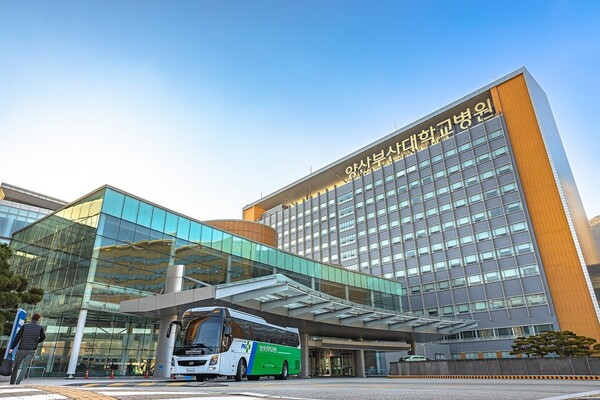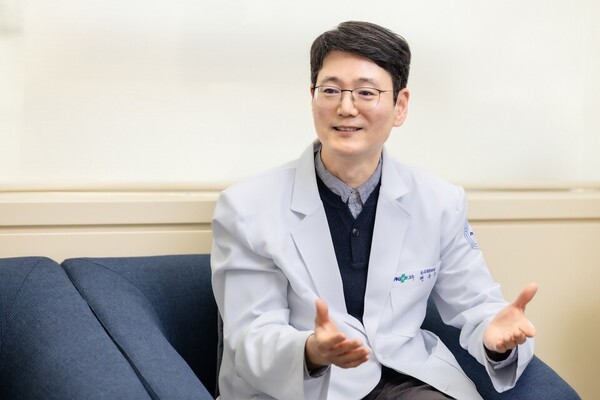The last day of February every year is “World Rare Disease Day.” People who decided it reportedly thought about the rarity of February, the last day of which ends on the 29th every four years, to symbolize the experiences of people with rare diseases. Korea had celebrated it on May 24 until last year. However, the country has unified it to the last day of February this year by amending the Rare Disease Management Act. So, this is the first year it is celebrated in Korea on Feb. 29.
So far, people with rare diseases have faced lots of difficulties in diagnosis and treatment due to the lack of therapies and negative social perceptions. However, with the recent increase in research and interest in rare diseases, new diagnostic methods and treatments are emerging gradually. In keeping with the trend, the government also comes up with new policies for rare disease patients.
One such policy is the designation of rare disease specialty centers by the Korea Disease Control and Prevention Agency (KDCA).
The 17 medical institutions selected this year will be responsible for treating rare disease patients, researching rare disease management, and carrying out rare disease registration and statistics jobs by the Rare Disease Management Act, raising expectations about creating a better diagnosis and treatment environment.
Korea Biomedical Review met with Dr. Cheon Chong-kun, head of the Rare Disease Center (Pediatrics) at Pusan National University Yangsan Hospital, who leads the Ulsan/Gyeongnam Regional Hub Center for Rare Diseases, to learn about the role of rare disease centers and specialized institutions, the difficulties faced by rare disease patients, and suggestions for improving the rare disease treatment environment.

Question: Could you briefly introduce the Rare Diseases Center at Pusan National University Yangsan Hospital?
Answer: The Pusan National University Yangsan Hospital’s Rare Disease Center was selected as the South Gyeongsang Regional Center for Rare Diseases in February 2019 and serves as a hub covering South Gyeongsang Province and Ulsan regions. To manage rare diseases in the region, we are establishing a rare disease treatment cooperation network, supporting rare disease diagnosis, training rare disease specialists, providing education for rare diseases, and providing psychological and emotional support. Starting this month, our hospital has been designated as the first-phase regional medical institution specializing in rare diseases, providing more specialized and professional medical services to patients with rare diseases.
Q: As the only rare disease center in the South Gyeongsang-Ulsan region, many patients will likely rely on this center. How many patients have visited the center, and what kind of patients are they?
A: In 2022, 7,519 patients visited the center. There are 471 registered rare diseases. Patients come to the center when they suspect a rare disease, and patients with ultra-rare diseases and other chromosomal abnormalities come to the center for special case registration and systematic management. In particular, patients and families with suspected hereditary rare diseases receive referrals from various regional hospitals because they can receive genetic testing for rare diseases without financial burden.
Q: It's been six years since this center was designated as the rare disease center for the region. What are some of your achievements?
A: We have established a rare disease cooperation system with local hospitals to facilitate referrals and referrals of rare disease patients, and we have contributed to the development of expert collaborative care and genetic counseling by operating the Rare Disease Integrated Care Center and the Rare Disease Specialty Clinic.
We are proud to have contributed to developing medical personnel specializing in rare diseases in the region. Especially since there are not many medical personnel specializing in rare diseases, it is important to form a human pool and re-educate them. Therefore, we are leading in rare disease education through in-house programs, seminars, and symposiums. Furthermore, we support regular rare disease education and patient meetings. For example, a Korean patient group for patients with Kabuki syndrome started gathering at our hospital for the first time.
Q: This month, the hospital was designated as the first-phase regional medical institution specializing in rare diseases. What will be the difference, and how will patients benefit from it?
A: Previously, there were 12 regional rare disease centers. From this year, however, they shifted to the rare disease specialty institution system, and its number increased to 17. Rare disease specialty institutions focus on providing intensive and specialized care for rare diseases, conducting rare disease treatment and registration statistics, and disease research. This is an upgrade from the concept of centers to institutions, and the capacity and expertise of rare disease management have been strengthened accordingly. The institutions will systematically receive relatively newly recognized rare diseases and strengthen their genetic counseling capabilities.

Q: This center has received the highest grade of A+ in KDCA's annual business evaluation. How will you share your know-how?
A: Nurturing human infrastructure is the key to our center's excellent performance. One clinician cannot do everything in rare disease care, requiring close communication and collaboration between specialists. The various symptoms experienced by patients with rare diseases require referrals to specialists in the field. If medical staff lack prior understanding or education about the disease, it is difficult for them to access specialized care. Therefore, it is important to establish a good cooperation system for rare disease care and increase understanding of the disease.
Accordingly, we encourage as many medical staff as possible to participate in rare disease education, not just patients. We also invite medical professionals to attend patient meetings to cross-fertilize the different symptoms that can occur in a single rare disease. In the case of rare diseases, it's important to keep the medical staff interested and committed to the disease. I have been at the hospital since 2009, and thanks to the various rare disease patient groups, I have not only seen rare diseases from different angles but also become attached to them.
Q: What inspired your hospital and this center to support rare disease self-help groups actively?
A: When people with rare diseases are diagnosed, they are curious to know if other patients in their country have the same disease. Most of them connect online through social media. They share experiences and find emotional support but often lack accurate medical information. There is a lack of information, especially when it comes to rare diseases that have only recently been recognized. For this reason, we hold patient education seminars with various experts in the hospital to provide the latest information and advice, which is often the first face-to-face meeting for patients.
Q: What more do you want to achieve through this center?
A: As a rare disease specialty center, we want to become a pillar of the region's complete rare disease medical care. We have already established a certain level of rare disease infrastructure through the base center project, so we are considering further enhancing the foundation. We want to strengthen our specialized treatment capabilities and serve as a center for rare disease treatment, research, and human resource training. We want to implement a system that enables a continuum of care centered on patients' health and quality of life, including prevention, treatment, and emotional care.

